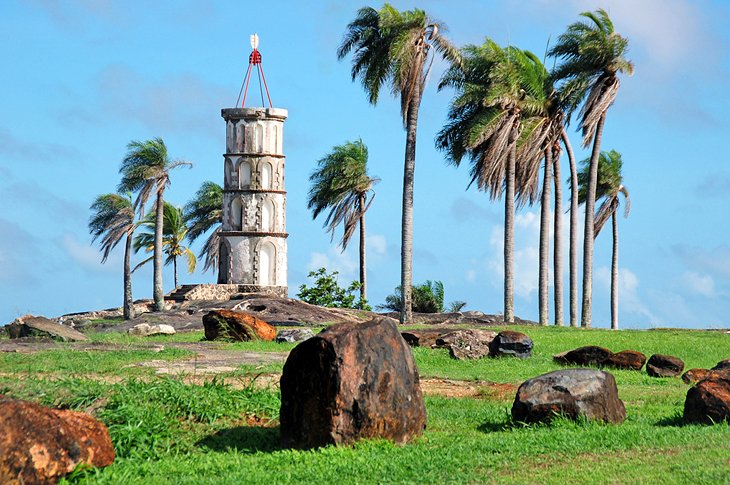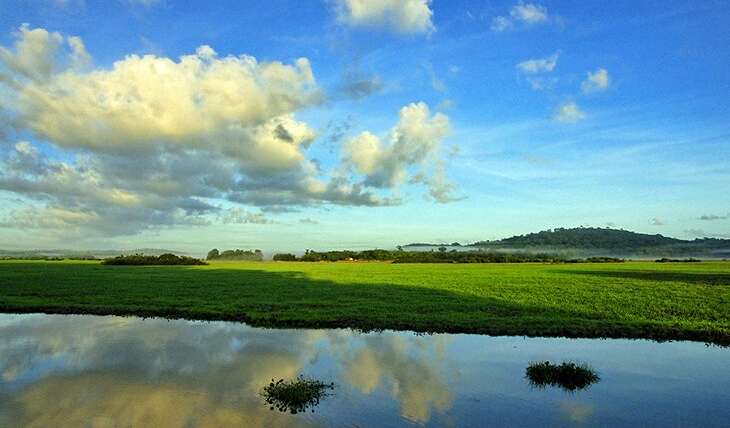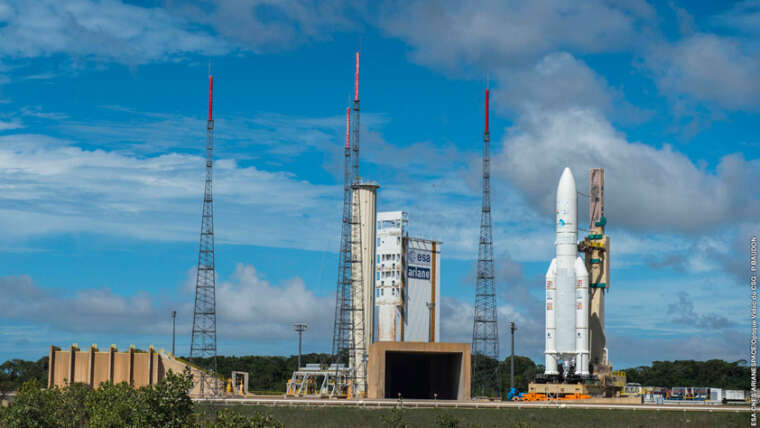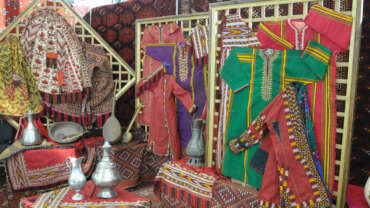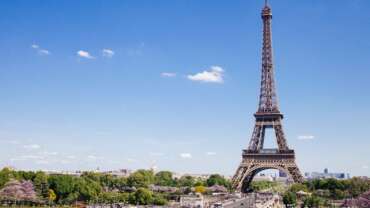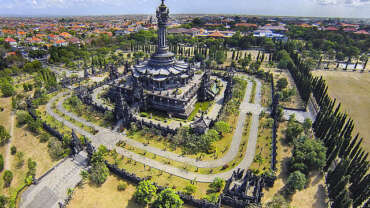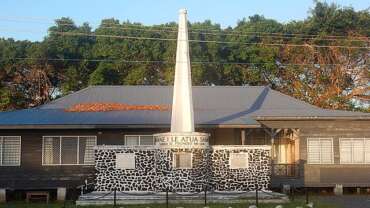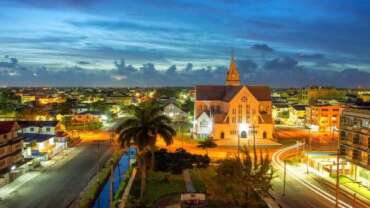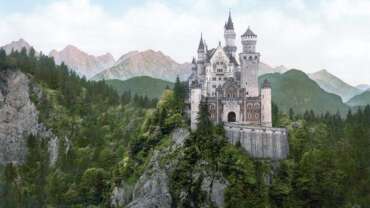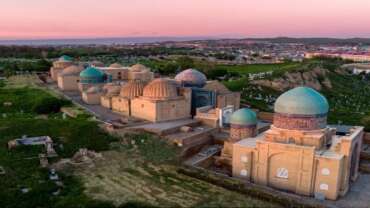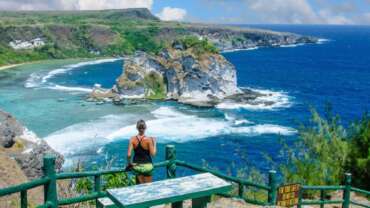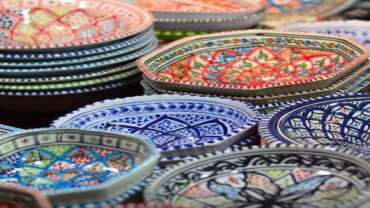Welcome to French Guiana - "Let Guiana take off"
French Guiana is an overseas department of France on the northeast coast of South America, composed mainly of tropical rainforest. The ruins of 17th-century Fort Cépérou overlook the capital, Cayenne, with its colorful Creole houses and street markets. Shops and cafes surround the palm-filled main square, Place des Palmistes. The Rémire-Montjoly suburb is lined with Atlantic coast beaches.
Ready for take-off? Let’s go to Guiana!
First stop: the Ariane rocket at Europe’s Spaceport in Kourou.
Next, sail up the Maroni River in pirogue before heading to Devil’s Island: is it a prison or paradise on earth? Go caiman-spotting in the Kaw swamp… keeping a safe distance!
Then relax and stock up on treats at Cacao’s hmong market.
Get to know French Guiana
A kingdom of forests, rivers and animals, French Guiana seduces all nature lovers. Located between the Republic of Suriname and Brazil, French Guiana is, with its 90,000km², the most vast, but also the only French department on the South American continent. The population is essentially concentrated in the towns of Cayenne, Kourou, and Saint-Laurent. The temperatures remain between 27°C and 32°C (~80° – 90°F) throughout the year. However, the two rainy seasons (November to February, and April to June) are very humid.
A paradise for ecotourism, Guiana is situated in northwest South America, between Suriname and Brazil. Traveling the Maroni allows one to discover the Amazon forest, as well as the pleasure of being able to share the culture, and the way of life of the river people.
In the southwest of Cayenne, the marshlands of Kaw are a veritable nature reserve, with around 100,000 hectares (~250,000 acres) at the depths of the mountain. Guiana presents a great opportunity to observe nature, easily accessible thanks to the presence of fauna and flora specialists. Finally, do not miss the carnival, the period of festivities that brings the Guyanese capital to life.
Here, the dream is inevitably immense. The first symbol of this is the European Spatial Center in Kourou, which helps to open the doors of knowledge of the universe.
Back down to earth, but with a very aquatic ambiance, “soft” exploration of the marshlands of Kaw and Sinnamary will provide a window into the exotic countryside. These protected areas, at the heart of a very young and vast regional natural park, constitute the ideal sanctum of the Caiman, and is also home to the dazzling Scarlet Ibis, an emblematic bird. The “tropical version” of the Atlantic seashore mixes it up again, with its zones of mangrove, or its nesting Luth tortoise, which holds a world record for being the biggest anywhere. The beautiful beaches of the small islands of Salut are rocked by the trade winds. On the coast, one can also “flee” off shore, which is to say to embark on a fishing trip in the same area where the first world championship was held.
Another not to miss ocean destination, is where the intensely verdant sea stretches the Maroni and Oyapock rivers, between Suriname and Brazil. The uncivilized forest is not actually as hostile as one would imagine!
This French department is also very exotic in the patchwork of its cultures. Here you find a cohabitation of the Amerindians (Wayanas, Emerillons, etc.), and the groups from various parts of Africa, Martinique or Asia. It is a mixture of “noirs-marrons”, where more recent diasporas make for all the charm and the beautiful singularity of Cayenne and Guiana’s Latino-Creole, allowing for direct access to exchange and discovery.
Don’t miss
– Saint-Laurent and le Maroni.
– Les Iles du Salut and the ruins of the Bagne (penal colony).
– The French Guiana Space Center and the Kourou Musée de l’Espace (Space Museum).
– Cayenne and its carnival.
– The marshlands at Kaw and their fauna.
French Guiana - Amazonia: what to do, what to see.
French Guiana and its share of Amazonia offer the universe to discover. Visitors fascinated by the mysteries of space need to witness a Soyuz or Vega launch. Nature lovers will be marveled by the sight of leatherback sea turtles laying their eggs on the beach. And all party animals will want to be part of French Guiana’s Carnival, the longest of its kind in the world! And that’s just for starters…come see what French Guiana has to offer.
Not to miss sights in French Guiana
• The historic center of Cayenne
Every visit to Cayenne begins by exploring the symbols of the historical, cultural and natural heritage of this city. Cayenne has inherited a particularly valuable architectural and natural domain, like the elegant Creole houses that dot the city center.
• The town of Saint-Laurent-du-Maroni and its unique architecture
This Guyanese city lies on the edge of Maroni river, on the border with Suriname. Saint-Laurent-du-Maroni’s former penal colonial history is told at the “Museum of Transportation,” inaugurated in 1958. This is where the author of Papillon, Henri Charriere, was reportedly detained.
• The botanic gardens of French Guiana
Located in the town of Macouria, this botanical garden covers sprawls over 3 hectares (7.5 acres), home to more than 4,500 plant species and a vast collection of 750 species of orchids.
• The Maroni river
Forming a natural border with Suriname, the Maroni is the longest river of French Guiana. Traversing part of the Maroni when you’re here is a must, as it’s an essential communication route to the villages of French Guiana. Several islands and 90 rapids punctuate its course, creating a stunning setting!
• The beaches of Montjoly
Near Cayenne, the long expanses of sand at Remire-Montjoly encourage relaxation in a wild and preserved setting, under the shade of coconut trees. Ideal for swimming or for water sports like sailing or surfing, these beachs are also a nesting site for turtles.
• The French Guiana zoo
French Guiana’s zoo, which boasts species unique to French Guiana and those from around the world, is home to more than 450 animals of about 75 different species. The visit can be done in two hours on a forest path (open even in case of rain), snaking through the heart of French Guiana’s flora.
• The Salvation Islands
Fifteen kilometers (9.32 miles) off Kourou, the archipelago of the Salvation Islands is made up of Île Royale, Île Saint Joseph and Île du Diable, feared names of the penal colony. On Île Royale, there are many vestiges of the penitentiary administration, ghosts of French Guiana’s past: the hospital, the church, the cure-center, the madhouse, the lighthouse, or the death row quarters…
• The French Guiana Amazonian Park
Numbering among the 10 national parks of France, the Amazonian Park of French Guiana was created in 2007, on 34,000 km² (13127 mi²). The park includes five municipalities, making it the largest national park in the European Union. It preserves a forest area with exceptional biodiversity and celebrates the cultural heritage of the Amerindian, Bushinengue and Creole populations living there.
• The Kaw Swamp nature reserve
The Kaw Marsh site is the largest wetland in France. With its 94,700 hectares (234,008 acres), it is the third nature reserve in the country, after that of the French Southern Territories (2,270,000 hectares or 5,609,292 acres) and that of Nouragues (100,000 hectares or 247,105 acres).
• The colonial style church of Iracoubo
Classified as a historical monument, the church of Bourg Iracoubo bursts in color with its interior frescoes by Bagnard Huguet. These works attract thousands of visitors each year, but many ignore the unusual history of this building, which dates from the end of the 19th century. Come find out what we mean for yourself!
Things to do in French Guiana
• Watch leatherback sea turtles as they lay their eggs on the beaches of Amana
Located between the Organabo River and the Maroni River, this reserve is one of the world’s most important sites for four species of sea turtles to lay their eggs: the leatherback turtle, the green turtle, the olive turtle and, rarely, the hawksbill turtle. It is also home to 286 bird species and many mammals.
• Join the Touloulous of the Guianan carnival in Cayenne
Each year on the Epiphany, the carnival of Cayenne beings, lasting six to ten weeks. The stars of this carnival are the “Touloulous” women disguised from head to toe, in petticoats, hoods, masks and long gloves, so that we cannot see a centimeter of their skin, walking through the parade totally unrecognizable!
• Shiver with fright on Devil’s Island
This 14 hectare (25 acre) piece of land off Kourou covered with palm trees, once housed a leprosarium before serving as a “political” prison under Napoleon III. Devil’s Island hosted some celebrity inmates, like Guillaume Seznec and the anarchist Marius Jacob, who inspired the character of Arsène Lupin. But the most famous of the convicts was Alfred Dreyfus, whose namesake affair divided France.
• Grab the chance of a front row seat for an Ariane launch at Kourou
Following Ariane, Soyouz or Vega’s takeoff from an observation site at the French Guiana Space Center, 7 (4), 15 (9), or 20 kilometers (12.42 miles) from the launch point will undoubtedly be the apogee of your trip to French Guiana. Follow all the phases of the flight through to the orbit of the satellites on giant screen.
• Watch the rainforest breathe from the top of an inselberg
The inselbergs are small granite mountains, reminiscent of islands, emerging from the forest line. There are about 200 in French Guyana and the highest culminates at 740 meters (2427 feet). From the top, you’ll take in a fantastic panorama of the surrounding forest.
• Cool off in the Fourgasier waterfalls
Beloved by nature lovers or those seeking family-friendly getaways in the shade, the Cascades de Fourgassier are easy to reach, about 15 kilometers (9.32 miles) from the village of Roura.
• Spend a night in a hammock in a traditional Amazonian carbet hut
A beautiful carbet is made of the Amazon: Toulouri leaves for the roof, tree branches for poles, and wooden slats for the floor. They’re found throughout different regions of French Guiana, in the middle of nature, sometimes perched in trees. Spend the night suspended in a hammock, lulled to sleep by the chirps and croaks of the rainforest.
• Swim in Toussaint Creek
In some spots of this clear water creek, it’s truly deep enough to swim. Spend a beautiful day of relaxation and swimming by the water, without missing a comfort—Toussaint Creek is equipped with hammocks, barbecue, toilets and garbage. It’s the ideal setting for a rainforest picnic!
• Savour Chinese soup in a Hmong village
Refugees from Laos after the Vietnam War, the Hmongs settled in Cacao (1 hour from Cayenne) in the 1970s. The village is the market garden of French Guiana, whose inhabitants mastered the art of cultivating fruits and vegetables. It’s best to visit on Sunday, the traditional market day.
• Buy fruits and vegetables in Cayenne market
The Cayenne market is also not to be missed! Housed in a big hall in the city center, you can enjoy local Ti’punchs (a rum and fruit drink) and all sorts of specialties, such as Laotian soups. Dew fruit, spices and colorful vegetables, in a mix of cultures—it’s Guiana set up in stalls!
Family Vacation in French Guyana
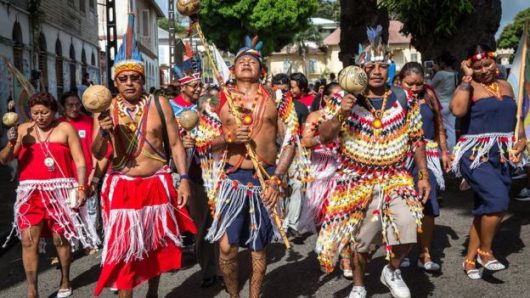
A place of contrasts, this corner of France nestled in South America is a lush wilderness juxtaposed against the modernism of the space center in Kourou. Its diversity is also embodied in its population, which comes from a wide variety of ethnic backgrounds.
The Best Time to Visit
The best time of year for family activities varies according to whether you are looking to watch the sea turtles (April to September) or to enjoy the sun (August to the end of November).
“Easy Adventure”
What a contrast between the high-tech space base in Kourou and the surrounding nature of the Amazon rainforest! Explore nature by canoe over the waterways—on majestic rivers like the Maroni, Oyapock, and Approuague. Live like an adventurer by making an overnight stop in the “carbets,” (traditional shelters), canvas tents, or cabins fully integrated into nature.
Observation of wildlife
For those focused on eco-tourism, you will find a tamed jungle, gentle and safe. Don’t like bugs? Rest assured: the tarantulas and snakes stay hidden, and mosquitoes are less intrusive than you might think (just watch out at night, that’s all).
Macouria Zoo
Across 160 acres, the zoo is home to almost 70 endemic animal species living as if in the wild. Young and old can observe over 450 specimens from small Tamarin monkeys to the “beefy” Tapir.
“Cultural Adventures”
– In Kourou, visit the Kalawachi and Kalapa Native American Cultural Center.
– In Cayenne, discover a snapshot of Guyana at the Alexandre Franconie Museum.
– In Régina, browse the Approuage-Kaw Municipal Eco-Museum, which presents the history and current issues of eastern Guyana in a beautifully-restored Creole house.



